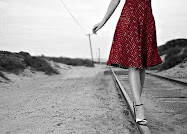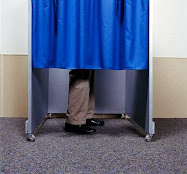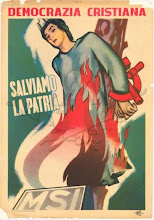
| |
Tuesday marks the start of early voting in Ohio-the state that held the key to the presidential election four years ago. In a place where voting issues have become the norm, some estimates have early voters comprising more than 35 percent of Ohio's total electorate this year. If so, it would be more than enough to swing the state to Democrat Barack Obama or Republican John McCain.
"Truth is, it's a bit of a work in progress here," says Democrat and longtime Ohio political consultant Jerry Austin. This is the first presidential election for which the state will allow early voting, and Austin says there's just not enough history to provide candidates and campaigns with much of a game plan.
"The biggest thing it forces you to do," says Austin, "is to allocate a lot of resources now, as opposed to leaving it all for the last three weeks of the race."
Across the country the frequency of early voting has increased dramatically over the past three election cycles as more states have moved toward no-excuse absentee voting. That means that tens of thousands of voters no longer need a legitimate reason to cast an absentee ballot.
One wrinkle to the early voting process in Ohio this year is a rule that will allow new voters to register and actually cast an early vote on the same day. Early voting in Ohio is set to begin Tuesday, but the state's registration deadline isn't until Oct. 6. During that six-day period, Ohio's Democratic secretary of state has ruled that residents can register and immediately cast a vote. It has resulted in a lawsuit from the state GOP, which says the rule raises the specter of fraud.
Ohio's state Supreme Court is expected to rule on whether the early voting process can move forward as planned sometime Monday.
The Obama campaign, meanwhile, is preparing to take advantage of the 6-day window with younger voters, particularly those on college campuses. The primary focus is Ohio State University, which has more than 50,000 students. The campaign is also concentrating on urban areas and other parts of the state where the likelihood of securing early votes for Obama is high.
Rock the Vote has plans for an Ohio bus tour to raise awareness of the early voting window that runs mostly through the state's urban areas and major college towns.
"The fact that [Ohio] has this golden window is something [Democrats] are seeing as a great opportunity to encourage folks to get out and vote early," says Christine Pelosi, a Democratic organizer. "The other benefit is that if you can get your supporters out now, before the final blitz of negativity, you can counter some of the voter suppression that comes in the form of negative campaigning during the last few weeks."
From a grassroots perspective, one of the keys to early voting is voter education. Pelosi says the greatest early voting hurdle tends to be unawareness of the rules. That's particularly the case in a state like Ohio, where the 6-day window breeds uncertainty.
"It's confusing," she says. "It made my eyes pop and I do this for a living. So, I can imagine the reaction of the average voter."
The McCain campaign, too, is rounding up early voters in Ohio, and says it's not ceding the playing field to Obama. The McCain-Palin ticket will be in Columbus, Ohio for a Monday morning rally.
Republican Phillip Stutts says that while on paper the Obama campaign has the organizing advantage, the McCain campaign boasts an Ohio grassroots staff that has worked together for more than one election cycle, and has executed early voting plans in the form of absentee balloting in previous years.
Of course, Ohio is far from the only key state where early voting will exert a major impact on the final vote. Early voting estimates are just as high in states like Nevada, New Mexico, Colorado and Florida, where between 30 and 40 percent of the total electorate is expected to cast early or mail-in votes.
In 2004, says Stutts, the early voting focus in the Bush campaign was on reliable voters. Stutts was the national director of the Bush campaign's highly successful 72-hour plan.
"We had an early vote strategy for every state in 2004, because you had to deal with different rules and regulations in just about every state," he says. "We tried to turn out our reliable voters early, which allowed us to spend the last week or so getting the less reliable voters out."
As for exactly who votes early, it's hard to identify any real pattern, says John Fortier of the American Enterprise Institute, a conservative think-tank. Based on past statistics, early voting doesn't appear to advantage one party over another, but Fortier says research does show that early voters are more partisan than the rest of the electorate.
In the end, says Stutts, early voting likely means that the next two weeks are just as important as Election Day for the GOTV operations of both campaigns.
"You could have a third of the entire electorate that has already voted by Election Day," he says. "So the best early vote strategy could really decide this entire election."



















